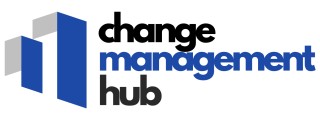-large-teaser.webp)
Understanding the Need for Integration
The Imperative of Data System Integration in Education Institutions
Higher education institutions today face a critical need to optimize their data system integration. As colleges and universities continue to embrace digital transformation, the seamless flow of information across various platforms becomes essential. Integrating these systems is not simply a technological upgrade; it plays a pivotal role in improving student success by ensuring timely access to accurate data for decision-making and student engagement.
The reliance on fragmented systems frequently leads to data silos, slowing down processes and creating inefficiencies in data management. This challenge is not exclusive to large universities but is equally poignant in smaller community colleges where resources may be more constrained. Without effective integration, higher education institutions may struggle with data migration, security compliance, and efficient data governance.
Understanding why integration is necessary involves recognizing the dynamic nature of student data. These data sets must be managed with precision to meet security and privacy requirements, ultimately fostering a conducive learning environment. By preparing to tackle these challenges head-on, faculty and administration can lay down the groundwork for impactful changes that drive overall success.
Optimizing student data system integration also requires strategic focus on training and support for staff, which ensures the systems are used effectively to support learning outcomes. For further insights on how to navigate change management challenges in this context, explore the role of a development strategist in navigating change management.
Identifying Key Challenges
Recognizing the Complex Landscape
In the realm of higher education, integrating student data systems is not without its hurdles. Institutions often grapple with a myriad of challenges that can impede the seamless flow of information. Understanding these obstacles is crucial for any college or university aiming to optimize their data integration processes.
Data Silos and Fragmentation
One of the primary challenges is the existence of data silos. These isolated pockets of information can hinder effective data management and student engagement. When data is fragmented across various departments, it becomes difficult to gain a holistic view of student success and learning outcomes. This fragmentation can also lead to inefficiencies in data governance and management, making it challenging for institutions to support their students effectively.
Security and Compliance Concerns
Another significant challenge is ensuring data security and compliance. With the increasing emphasis on data privacy, colleges and universities must adhere to strict security protocols. This involves safeguarding student data against breaches and ensuring compliance with regulations. Failure to do so can result in severe consequences, both legally and reputationally.
Technical and Resource Limitations
Technical limitations and resource constraints also pose significant challenges. Many institutions, especially community colleges, may lack the necessary infrastructure or expertise to facilitate smooth data migration and integration. Additionally, faculty and staff may require additional training and support to effectively manage these systems, which can be time-consuming and resource-intensive.
Overcoming Challenges with Strategic Planning
To navigate these challenges, institutions must engage in strategic planning. This involves crafting a comprehensive approach that addresses these issues head-on. For more insights on strategic planning, consider crafting a new business idea from concept development to strategic planning. By doing so, institutions can lay the groundwork for successful data integration, ultimately improving student success and engagement.
Best Practices for Successful Integration
Implementing Best Practices for a Smooth Transition
To ensure a successful integration of student data systems in higher education, it is crucial to apply best practices that have proven effective across diverse educational institutions. These best practices allow educational institutions, including colleges and universities, to manage their data integration initiatives with a higher success rate, boosting student engagement and improving overall student success.- Data Governance: Establishing clear data governance protocols is vital. These protocols help maintain the quality, integrity, and security of student data, aiding in minimizing errors and ensuring security compliance. As data migration takes place, prioritizing data security can prevent potential data breaches and foster a culture of privacy and trust.
- Stakeholder Involvement: Engage all stakeholder groups, including faculty, staff, and students, from the onset of integration projects. Their insights and feedback can highlight critical areas of focus to improve student data systems. Such involvement ensures the systems align with both institutional goals and the needs of the community college and university students.
- Collaboration Across Departments: Encouraging collaboration across departments helps in bridging data silos. Inter-departmental teams can work together to foster a shared understanding of what systems data points are necessary for student success. The removal of data silos ensures a more holistic view of student information and aids in the development of more targeted interventions.
- Continuous Feedback and Iteration: Use continuous feedback loops to gather data on the integration process's effectiveness. Regular monitoring and iteration can lead to early identification of issues and timely improvements. This ongoing effort supports continuous improvement in data management practices and helps the institution stay aligned with evolving educational needs.
- Leveraging Technology Solutions: Apply advanced technology solutions that support seamless integration. Automated tools can aid in transforming complex data sets into understandable formats, thus reducing time and effort. Embracing technology goes in tandem with providing ongoing training and support for staff to navigate new systems effectively.
Leveraging Technology for Seamless Integration
Embracing Technology for Effective System Integration
In the ever-evolving landscape of higher education, the integration of student data systems relies heavily on the strategic use of technology. Technology plays a pivotal role in bridging the gap between disparate systems within educational institutions, especially when it comes to seamlessly integrating student, faculty, and data management systems. One of the primary advantages of leveraging technology is the facilitation of automated data migration and integration processes. Automated systems not only reduce the likelihood of human error but also ensure that education institutions can maintain data accuracy and consistency across all platforms, thereby fostering student success. By doing so, colleges and universities can significantly reduce the time spent on manual data entry, allowing staff to focus on supporting teaching and learning initiatives. Moreover, the application of advanced software solutions aids in mitigating the challenge of data silos. Breaking down these silos ensures that critical student information is accessible across departments, promoting a unified approach to student engagement and education data management. Furthermore, these systems are designed with data security in mind, ensuring compliance with regulations and safeguarding sensitive student data. The dynamic integration of technology into data governance frameworks also supports institutions' capability to adapt to new educational demands swiftly. By implementing scalable and adaptable systems, community colleges and universities can respond promptly to the changing needs of their students and faculty. In conclusion, a robust technological infrastructure is indispensable for the successful integration of student systems in higher education, facilitating improved data security, reduced operational time, and enhanced student success. It is essential for education institutions to continuously invest in cutting-edge solutions for optimal performance and longevity of their systems.Training and Support for Staff
Empowering Faculty for Effective Use
In the ambitious endeavor of optimizing student systems in higher education institutions, training and support for staff cannot be overlooked. Faculty and administrative staff are crucial to the successful integration of systems, such as the management of systems data and ensuring data security. Their involvement is vital in fostering the smooth running of data integration processes, managing data silos, and adhering to data governance protocols. Successful integration, to a large extent, relies on empowering faculty with the right tools and knowledge. By prioritizing training programs that focus on data management, security compliance, and technology usage, institutions can build a knowledgeable workforce that is confident in handling student data efficiently. Interactive learning and workshops can also play a significant role in boosting faculty confidence and competence in using these integrated systems. Regular feedback loops and support channels should be established to assist faculty when challenges arise, facilitating an environment where continuous learning and improvement is encouraged. Providing tailored support ensures that faculty and administrative staff can effectively manage and engage with the new systems, contributing positively towards student success. Time management is another critical aspect of faculty support. Efficient systems can help reduce workloads and allocate more time for faculty to engage directly with students, thus enhancing student success and engagement in learning challenges. Community colleges and other education institutions should establish mechanisms to track faculty usage and technology adoption to ensure continuous improvement and refinement of these systems, ultimately leading to an elevated experience for both students and staff alike.Measuring Success and Continuous Improvement
Assessing Progress and Seeking Continuous Enhancement
To truly measure the efficacy of your student data system integration, it’s crucial to establish clear metrics that align with your institution's goals. When thinking about what defines success in higher education integration, consider factors like improved student engagement, streamlined data governance, and enhanced data security.
Begin by evaluating the impact of the integration on student success and academic management. Are students benefiting from more tailored support services? Has data migration reduced errors and duplicated efforts within your systems? Answers to these questions help gauge institutional progress.
Consider implementing regular feedback loops that involve students, faculty, and administrative staff. Continuous engagement with these stakeholders enables institutions to adapt and refine systems based on real-time input, enhancing both functionality and security compliance.
Data analytics plays a significant role in this phase by providing concrete insights into system performance and user interaction. These analytics should be utilized not only for auditing processes but also for identifying areas of improvement and potential data silos that could hinder higher education goals.
Moreover, instilling a culture of continuous improvement among faculty and staff is pivotal. Fostering a learning environment where changes are welcomed and seen as opportunities can help drive better outcomes and maintain the momentum of integration efforts. Training sessions and ongoing support learning can reinforce these values and ensure that systems data and processes remain aligned with educational objectives.













